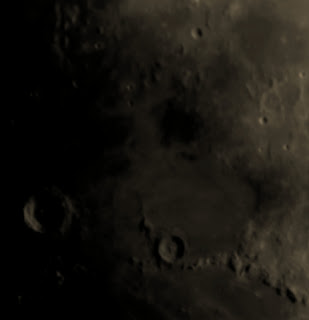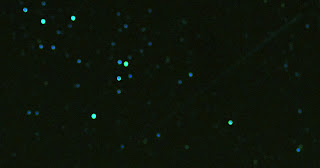First, many thanks to all my followers and audience during
2017.
Astronomy Blog (arranged by month on here)
My astronomy blog will stay pretty much as is. I cannot say,
for sure, whether I will observe and photograph more or less. As with most
people, my sources of income and family needs come before astronomy, blogging
and just about anything else. As before, posting my updates will usually be up
to two weeks after my observation.
Photos https://www.flickr.com/photos/philippughastronomer/with/39354539622/
Fortunately, I’m not one of those people who post hundreds
of selfies on Instagram and never have been. My appearance is less than
interesting to most people as I am neither exceptionally handsome nor ugly. In
any case, I DO NOT share photographs instantly anyway but carefully check and
edit them before they reach cyberspace. I am still guilty of over-posting
photos. From now on I will only post photos that are of high quality or
especially interesting but, preferably both. I use Flickr for my gallery and I
will stick with Flickr unless they start charging and restricting space, which
is why I migrated to Flickr in the first place.
I will still be posting photos in my astronomy blog but will
only post the highlights to my Flickr gallery and my picture videos.
I have started a new blog entry for non-astronomy photos,
with only highlights going to my Flickr gallery and picture videos: http://sungazer127mak.blogspot.co.uk/2018/01/non-astronomy-photos-2018.html.
Asocial Blog http://sungazer127mak.blogspot.co.uk/2018/01/the-asocial-blog.html
My Writing Blog (http://sungazer127mak.blogspot.co.uk/2018/01/2018-writing-blog.html)
Twitter https://twitter.com/search?q=%23PhilipPugh&src=typd
I will continue to use Twitter to communicate small messages
and links to updated material.
I cannot promise what time of day it will be but I will post at
least one astronomical photo per day. If it is not a current photo, it will be
an interesting one from my back catalogue. If you don’t have Twitter and don’t
want to have Twitter (although setting up an account is quite easy) just use
Google or another search engine and search for “Philip Pugh” and “astronomy”.
You can also view my Twitter feed via a link on my home page, without setting
up an account. Better still, set up an account and follow me and I will follow
you back and will re-tweet anything I find interesting from you.
I will post major updates on Facebook (https://www.facebook.com/philip.pugh.56), too but I do not
check my Facebook messages hourly or even daily.
My Website http://www.philippughastronomer.com/
This will remain largely untouched and most of my media
content will be in my blog. However I PROMISE to update the background photos
more often, something I failed to do adequately in 2016 and 2017.
Feedback
Feedback is welcome and I will address it as completely and
promptly as I can.
And Finally…
The nature of my life and anticipated changes for 2018 will
mean that I will not update my social media for days but, conversely, may have
times when I am less busy and able to respond to messages and post updates.



























